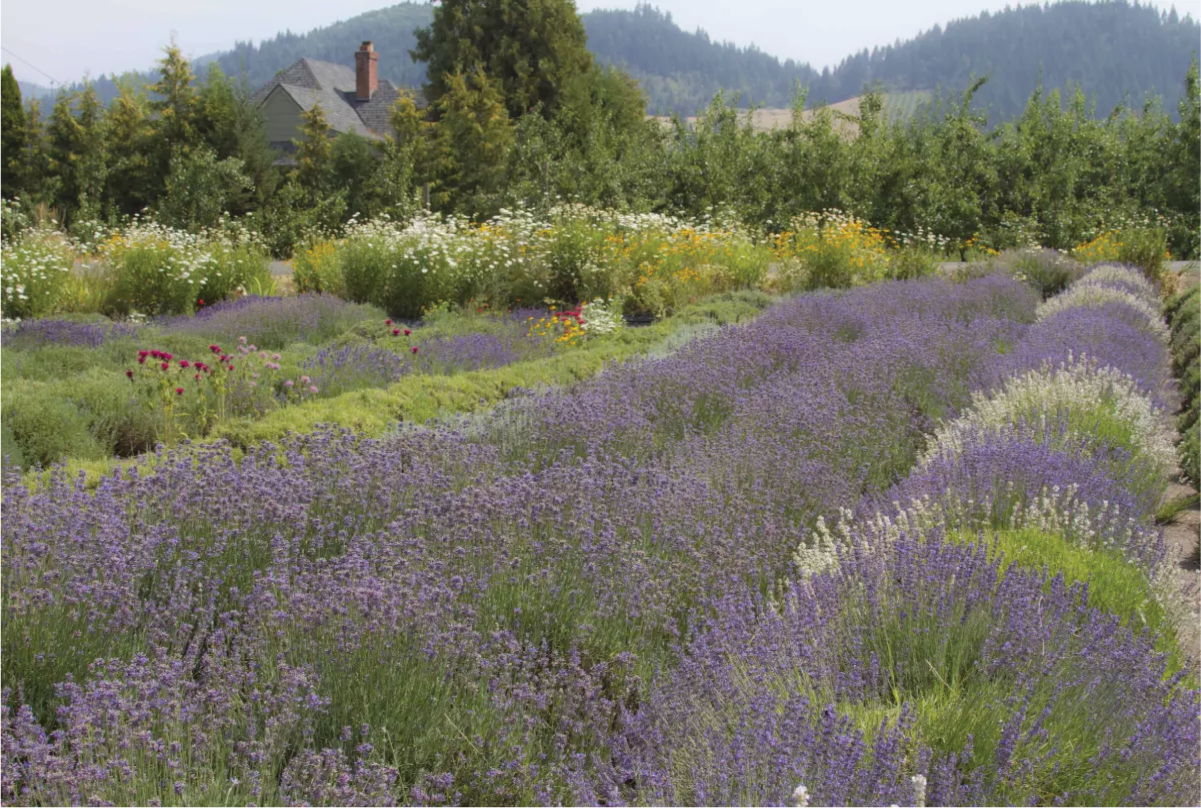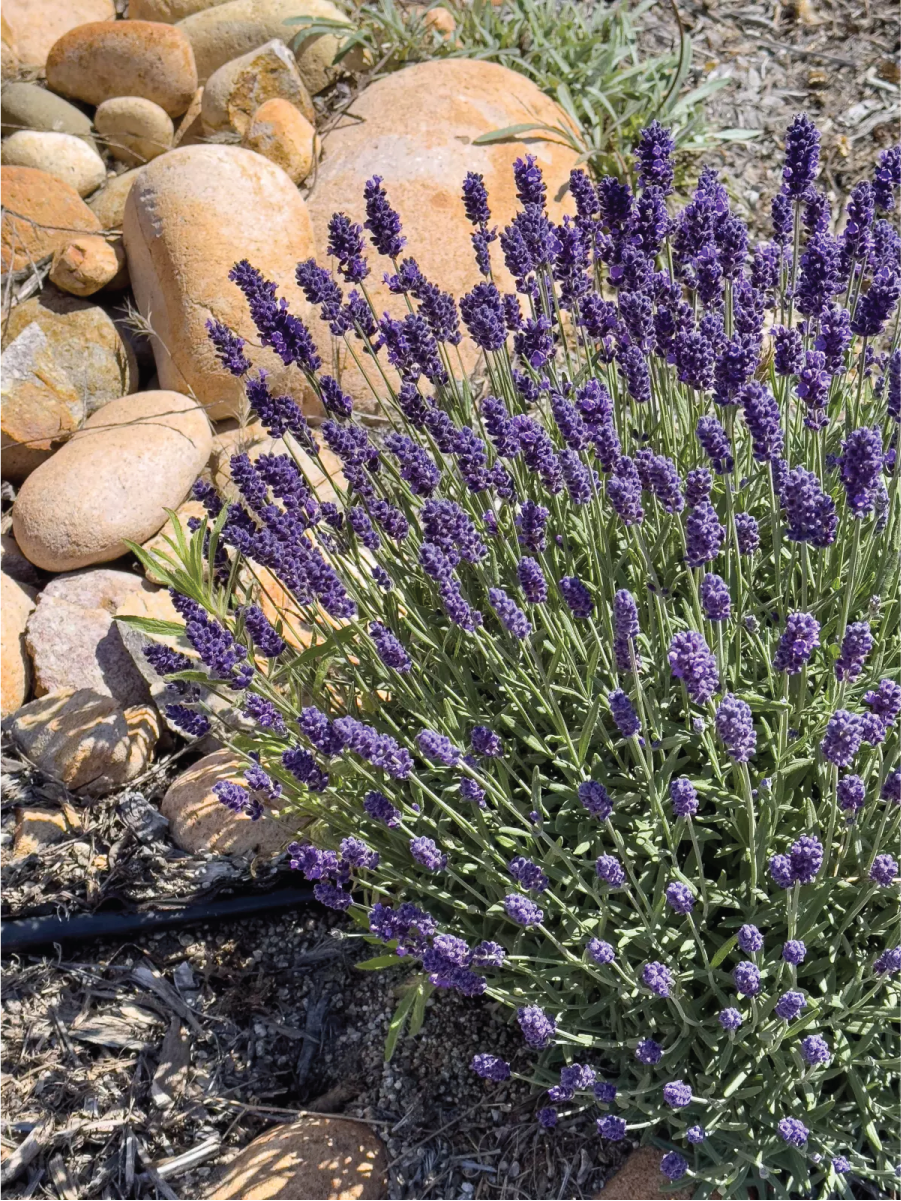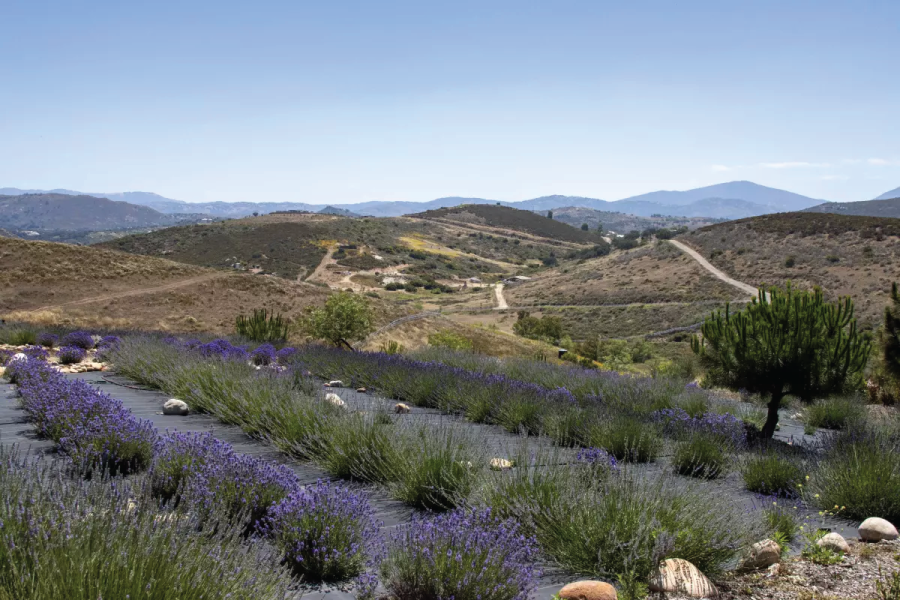Lavender plants offer a wealth of uses

A vigorous hedge of English lavender thrives in a northern California garden. (Rachel Cobb)
Aromatic, colorful bushes grow easily in San Diego County region; here’s what to know about the 4 most common varieties
By Lee Somerville
(This article first appeared in the May 11, 2024 edition of the San Diego Union-Tribune)
“Lavender’s blue, dilly dilly, lavender’s green,
When I am king, dilly dilly, you shall be queen.”
— old nursery rhyme, Anonymous
Of all the flowers in the garden, lavender is probably one of the most popular and easily recognized for its beautiful purple spiked blossoms and aromatic fragrance. Native to the dry slopes that surround the Mediterranean Sea, Lavandula was prized by Egyptians, Romans and Greeks for its medicinal and cleansing qualities and, in fact, its name probably originates from the Latin lavare, which means ”to wash.”
According to folklore, the famed Egyptian queen Cleopatra used lavender oil to mask the odor of the donkey’s milk she bathed in; unfortunately, her lush lavender gardens were a favorite hiding place for snakes, one of which supposedly killed her. Centuries later, French washerwomen — lavandières — spread their sheets over lavender bushes to bleach, dry and scent them.
From medieval times, lavender oil has been used as a calming ingredient in smelling salts, a moth repellent for linen closets, and a disinfectant. First grown commercially in the Provence region of southern France, its waving purple spires still grace the hillsides and perfume the surrounding air during its exuberant late-spring bloom. In 19th century England, Queen Victoria sprinkled lavender water on her handkerchiefs, thereby bringing fame and fortune to Yardley of London, whose iconic “English Lavender” perfume dominated the commercial market for years

Lavender plants are attractive whether grown singly or in hedges. Their distinctive purple color, strong stems and neat growing habit demonstrate why the plant is such a popular addition to the home garden. (Rachel Cobb)
During the U.S. Civil War and even during World War I, soldiers’ wounds were cleansed with lavender water, and to this day lavender is used as a sickroom aid for its calming and restorative properties and clean scent. Herbal practitioners suggest several remedies that include lavender, and its perfume is well-known in beauty products and room fresheners. Because both the flowers and stems are aromatic, it is a common ingredient in dried flower arrangements and potpourri.
In Mediterranean climates like that of Southern California, where cool rainy winters are interspersed with warm dry summers, lavender is a perfect choice for the sunny flower and herb bed. With well-drained soil and good air circulation, it will need little care once it is established, although the occasional pruning to remove woody stems will improve its shape and encourage further bloom.
Choosing which lavender to plant in your garden can be confusing because there are so many varieties to be found in local nurseries. To make things even more complicated, names change over time, and new hybrids are continually being introduced. To simplify the choice, here are a few basics:
“Lavender” is the common name for Lavandula, a genus of about 48 flowering species of the mint family. The four most common varieties are English (Lavandula angustifolia), Spanish (Lavandula stoechas), French (Lavandula dentata) and Lavandin, a hybrid of English and Portuguese lavender (Lavandin x. intermedia.). Each has many named cultivars and hybrids that differ in appearance, growth habits, flower color, size and even fragrance.
English lavender (not native to England but successfully adapted to its cooler climate) is early blooming and fragrant, with tall flowering stems rising above low mounded growth. Within this variety are well-known favorites including ‘Hidcote,’ ‘Munstead,’ ‘Grey Lady,’ ‘Alba’ and ‘Vera.’ Depending on the variety, the leaves may be green or gray-green, pointed or feathery, and the flower colors can range from white through pink to deep violet.

A commercial field of lavender growing successfully in the back hills of San Diego County. (Rachel Cobb)
Spanish lavender is recognizable by two small bracts that emerge above the rounded flowers and resemble rabbit ears. It is less fragrant but more drought tolerant than other varieties in our climate. Selections include the ‘Madrid’ series with interestingly colored flowers ranging from sky blue to deep rose pink. French lavender has similar rabbit ear bracts, but its leaves are saw-toothed, grey-green and somewhat fuzzy. Both varieties bloom in summer, and pruning will encourage a second bloom.
Lavandin is sometimes known as hedge lavender because of its height and rangy growth. It is a large and extremely fragrant and produces more oil per plant than other varieties, and therefore a favorite for perfumiers and crafters. Selections include ‘Provence,’ ‘Abriali,’ ‘Grosso’ and ‘Super.’
The best way to learn about lavender is to grow some! Check out local nurseries to see what’s available, read the labels, and if you don’t have a garden, try some in a pot on the patio or by the kitchen door. It’s easy, takes very little care and is guaranteed to bring you pleasure.
Somerville is a University of California Cooperative Extension Master Gardener and landscape historian who enjoys researching and writing about garden history and plants.

